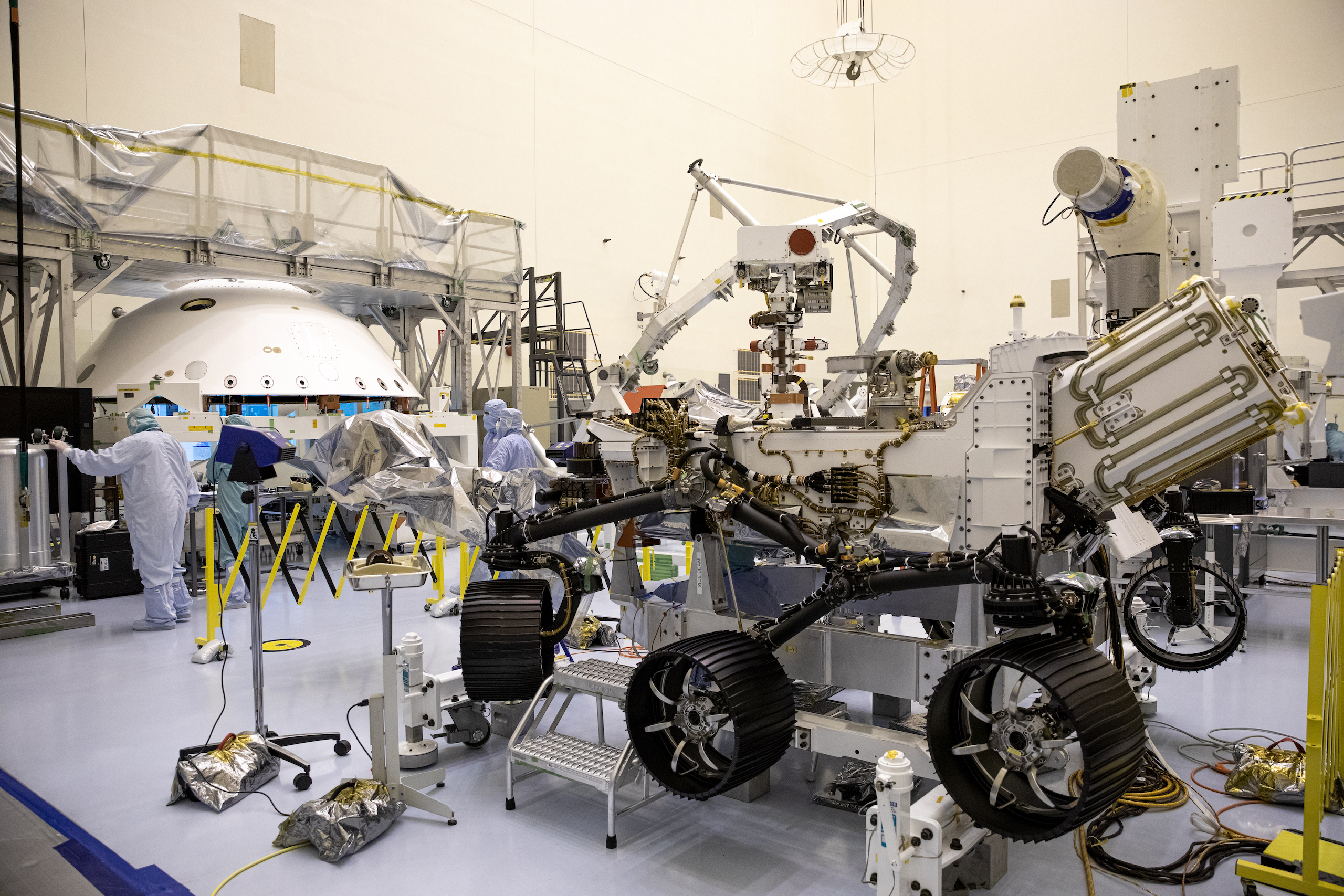
Preparations have continued to go smoothly for next month’s targeted launch of NASA’s Mars 2020 mission to the Red Planet. The mission includes a car-sized rover as well as the first helicopter to ever be sent to another planet.
The rover’s primary mission is to search for signs of ancient microbial life, as well as study the Martian climate and geology. The rover also will collect samples for a later mission to return them to Earth as another step along the path to human exploration in the 2030s.
Last month saw progress on a number of fronts. The last of the sample-return tubes were loaded into the rover. The ULA Atlas V rocket also arrived from Alabama to Cape Canaveral Air Force Station in Florida. The Atlas is now inside the Vertical Integration Facility at Space Launch Complex 41, where the Centaur upper stage and the payload fairing, which protects the spacecraft during launch, will be stacked on top of it.
In addition, the Mars 2020 team completed a review of the mission and was able to extend the launch window from July 17 all the way until August 11. With the final weight of the spacecraft now known, the launch window was able to be extended by five days from the original period that was calculated more than four years.
“Vehicle design maturity is the space navigator’s friend,” said Fernando Abilleira, design and navigation manager for the mission. “We now have a 26-day launch period to get Perseverance on its way.”
Upon a successful liftoff, the mission’s rover and attached helicopter will land in Mars’ Jezero Crater on Feb. 18, 2021.
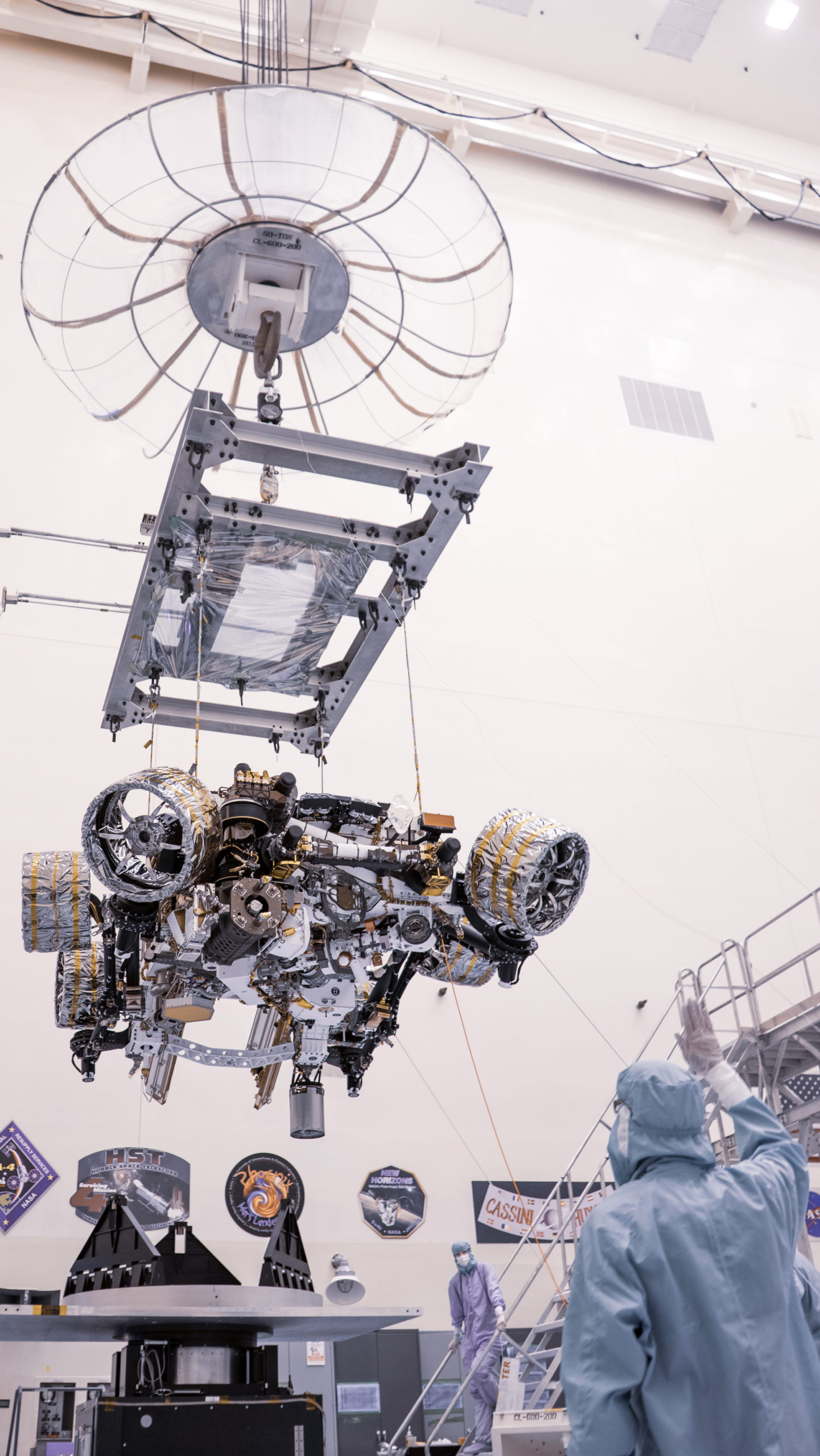
Virginia student’s Perseverance name chosen for rover
Perseverance – that’s the outstanding winning name NASA has chosen to name the Mars 2020 rover based on an essay submitted by seventh grader Alex Mather of Virginia for NASA’s nationwide contest where kindergarten through 12th-grade students across the United States submitted essays to “Name the Rover.”
The winning Mars 2020 rover name was announced March 5 by Thomas Zurbuchen, associate administrator of the Science Mission Directorate, during a celebration at Lake Braddock Secondary School in Burke, Virginia, broadcast live on NASA TV. The winning name ‘Perseverance’ was chosen by Zurbuchen from the final nine candidate names selected from over 28,000 essays submitted after the contest began on Aug. 28 last year.

“We’re always curious and seek opportunity…but if rovers are to be the qualities as us as a race, we missed the most important thing: Perseverance,” said Mather in his essay.
Zurbuchen was at the school to congratulate 13-year-old.
“Alex’s entry captured the spirit of exploration,” said Zurbuchen. “Like every exploration mission before, our rover is going to face challenges, and it’s going to make amazing discoveries. It’s already surmounted many obstacles to get us to the point where we are today – processing for launch. Alex and his classmates are the Artemis Generation, and they’re going to be taking the next steps into space that lead to Mars. That inspiring work will always require perseverance. We can’t wait to see that nameplate on Mars.”
https://x.com/NASA/status/1235637735869816840
Mather read his entire winning essay on stage:
“Curiosity, Insight, Spirit, Opportunity,” said Mather. “If you think about it, all of these names of past Mars rovers are qualities we possess as humans. We’re always curious and seek opportunity. We have the spirit and insight to explore the moon, Mars and beyond.”
“But if rovers are to be the qualities of us as a race, we miss the most important thing: Perseverance. We as humans evolved as creatures who could learn to adapt to any situation, no matter how harsh. We are a species of explorers, and we will meet many setbacks on the way to Mars. However, we can persevere. We, not as a nation, but as humans will not give up. The human race will always persevere into the future.”
NASA has traditionally engaged young students to name its rovers since Sojourner in 1997.
“Perseverance is the latest in a long line of Red Planet rovers to be named by school-age children, from Sojourner in 1997 to the Spirit and Opportunity rovers, which landed on Mars in 2004, to Curiosity, which has been exploring Mars since 2012. In each case, the name was selected following a nationwide contest.”
During the NASA TV broadcast, the agency also showed the JPL assembly team attaching the ‘Perseverance’ nameplate to the rovers robotic sampling arm.
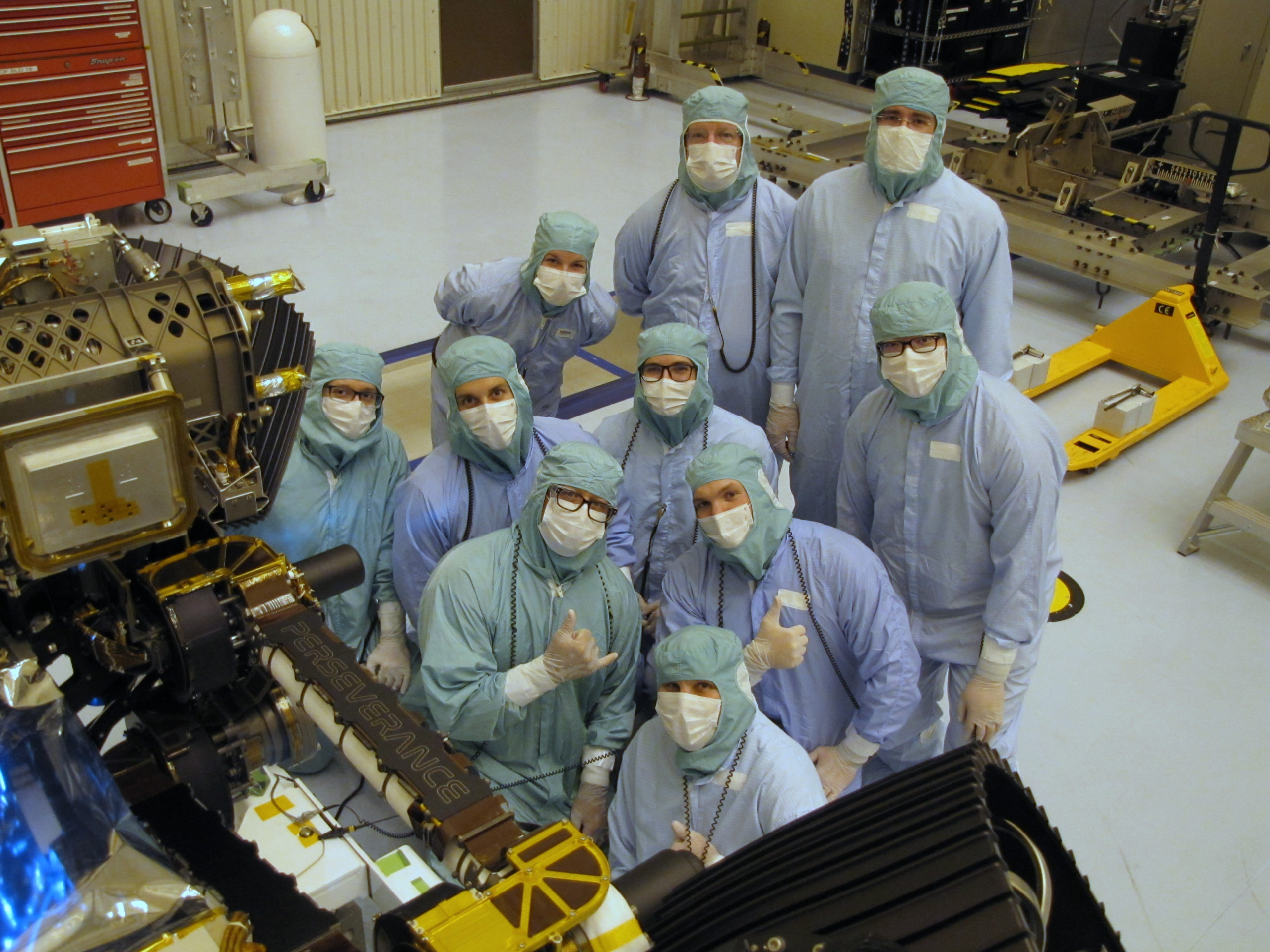
Notably, the name ‘Perseverance’ is the location where the Opportunity rover died in a dust storm in 2018.
During a post-announcement media telecon on March 5, I asked Mather if that played a role in his selection.
“Yes,” he replied
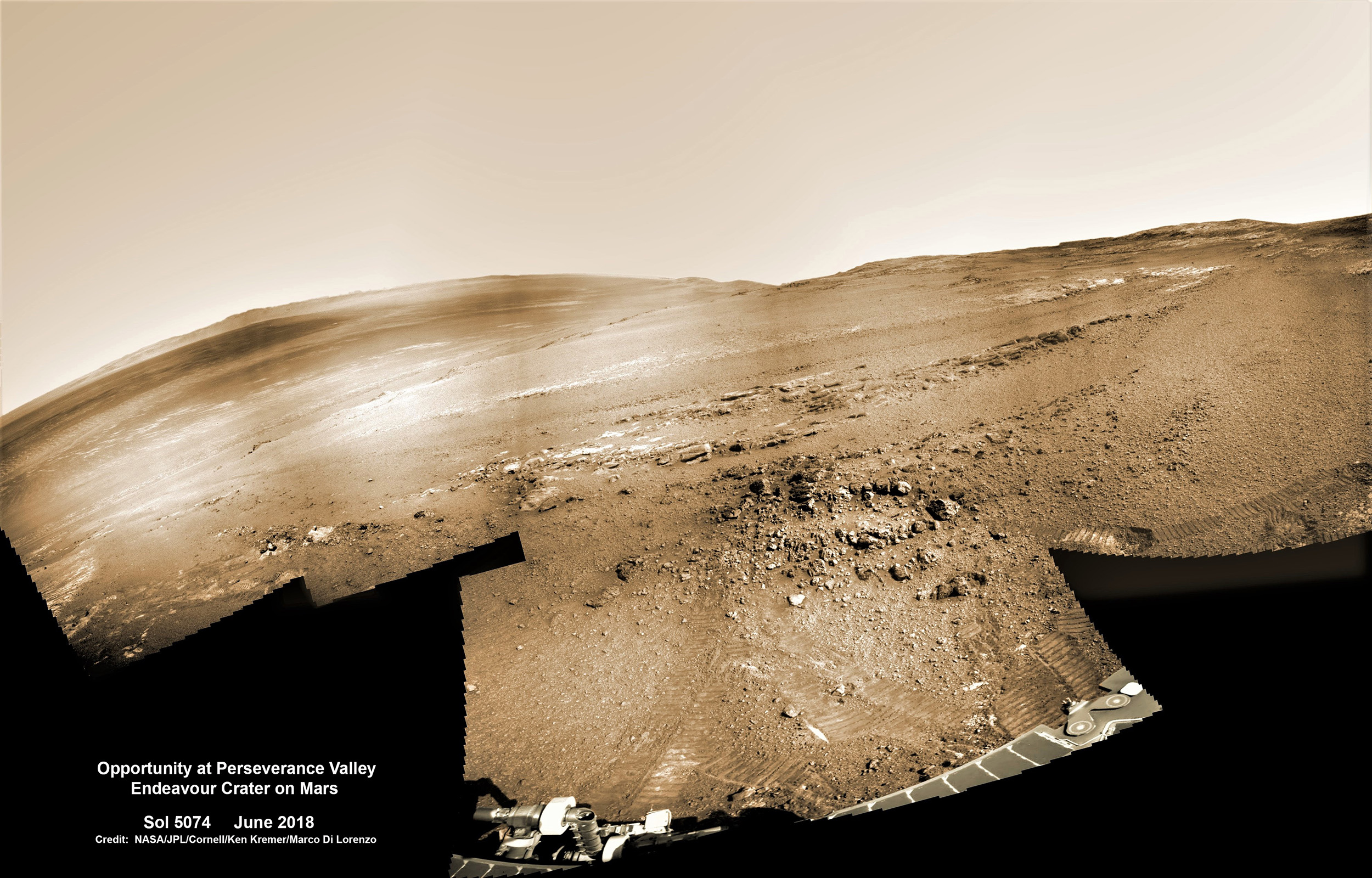
Alabama student’s Ingenuity name chosen for helicopter
Ingenuity has been chosen as the name for the small but innovative and groundbreaking spacecraft that will mark NASA’s first attempt at powered flight on another planet as part of NASA Mars 2020 Perseverance rover mission – and the name was submitted by Alabama High School junior student Vaneeza Rupani.
NASA’s 2020 Perseverance rover will deliver it to the surface of the Red Planet during a soft landing via the skycrane maneuver targeted for Jezero Crater in Feb. 2021.
NASA Administrator Jim Bridenstine made the final selection of ‘Ingenuity’ as the winning name for the Mars 2020 Helicopter.
Ingenuity was selected from among the finalist names submitted for NASA’s “Name the Rover” essay contest.
“Vaneeza Rupani, a junior at Tuscaloosa County High School in Northport, Alabama, came up with the name and the motivation behind it during NASA’s “Name the Rover” essay contest,” NASA announced. “Destined to become the first aircraft to attempt powered flight on another planet, NASA’s Mars Helicopter officially has received a new name: Ingenuity.”
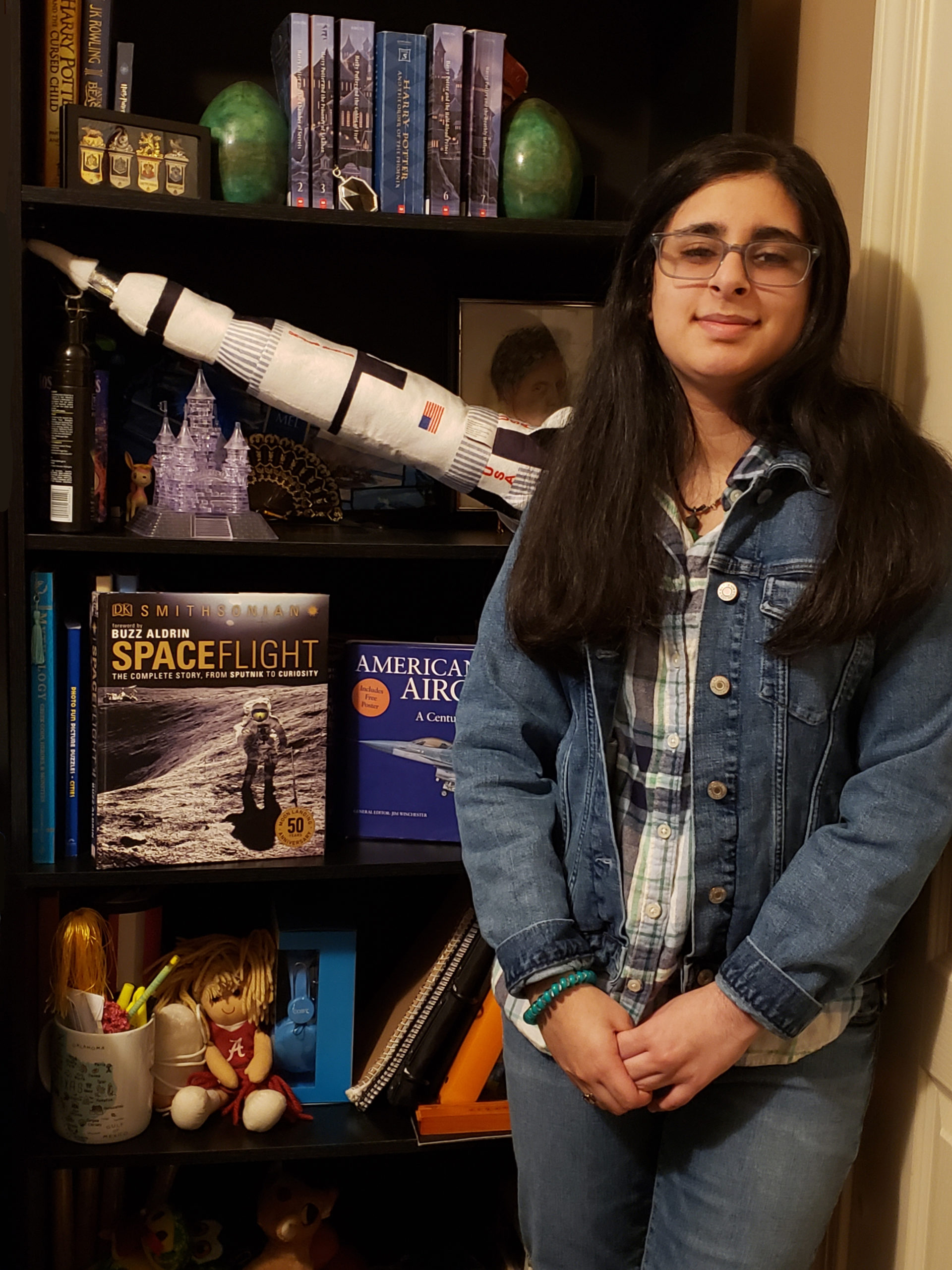
“The ingenuity and brilliance of people working hard to overcome the challenges of interplanetary travel are what allow us all to experience the wonders of space exploration,” Rupani wrote in her contest submission.
“Ingenuity is what allows people to accomplish amazing things, and it allows us to expand our horizons to the edges of the universe.”
Ingenuity will attempt the first-ever flight on another planet – namely Mars – as a payload launch to the Red Planet as part of NASA’s next Mars rover mission: the Mars 2020 Perseverance rover.
“Ingenuity encapsulates the values that our helicopter tech demo will showcase for everyone when it takes off next year as the first aircraft on another planet’s surface,” said Bridenstine.
“It took a lot of hard and ingenious work to get the helicopter ready and then placed on the rover, and there’s a lot more going to be required. I was happy we had another great name from the naming contest finalists from which I was able to select something so representative of this exciting part of our next mission to Mars.”
The goal of the Ingenuity Mars Helicopter is to prove the rather difficult feat that a heavier than air vehicle can fly in the Red Planets extremely thin atmosphere.
“On behalf of the team I want to thank you Vanezza,” said MiMi Aung, Mars Helicopter project manager at JPL, durting a congratulatory phone call with 11th grader Vaneeza Rupani.
“In the early days of this project, the feasibility of flying at Mars was questioned,” said MiMi Aung, Mars Helicopter project manager at JPL.
“But today we have a helicopter down at the launch site, installed on the rover and waiting to board the rocket which will carry us to the Red Planet. Like Vaneeza said in her essay, ingenuity and hard work led us to see beyond what was logical to what was possible. Now Ingenuity will have its chance to fly at Mars.”
NASA’s Mars Helicopter was attached to the belly of the Mars 2020 Perseverance rover in the High Bay 1 clean room at the Jet Propulsion Laboratory in Pasadena, California in Aug. 2019.
“The twin-rotor, solar-powered helicopter was connected, along with the Mars Helicopter Delivery System, to a plate on the rover’s belly that includes a cover to shield the helicopter from debris during entry, descent and landing,” said NASA officials.
The four-pound (two-kilogram) solar-powered experimental craft was built from a combination of specially designed components and off-the-shelf parts.
After the touchdown it will remain encapsulated inside the shield to protect it from the EDL debris until the team decides the time is right to proceed. Then if it survives the cold Martian nights during its pre-flight checkout, the team will proceed with testing, says NASA.
The team expects roughly a 30-Martian-day (31-Earth-day) experimental flight-test window for their “high-risk and high reward” experimental technology demonstrator payload.
Then the small craft “will prove that powered flight can be achieved at Mars, enabling future Mars missions to better utilize second-generation helicopters to add an aerial dimension to their explorations.”
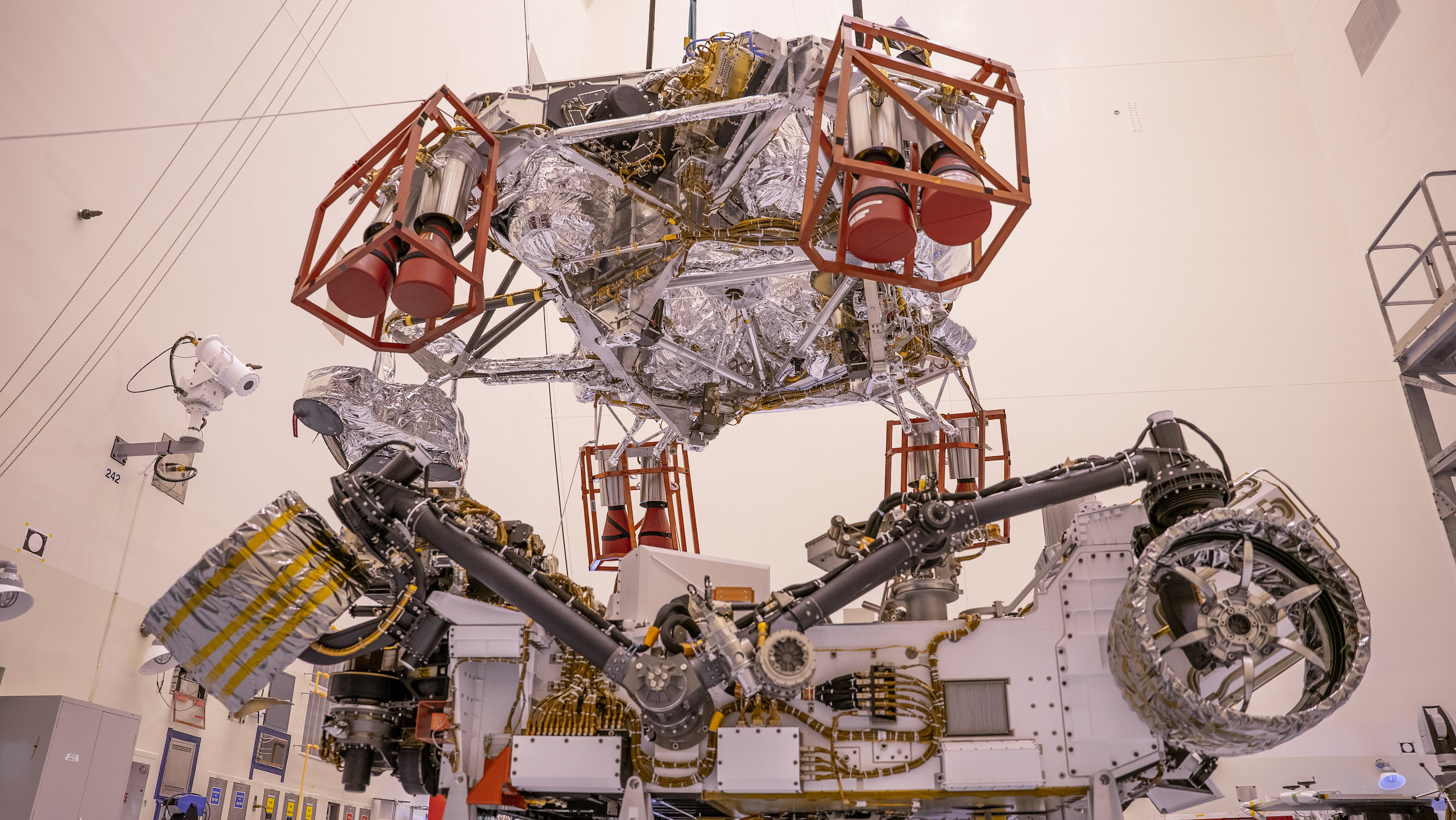
Rupani’s was among 28,000 essays submitted to NASA by K-12 students from every U.S. state and territory recommending names for the next Mars rover.
In March, the agency announced that seventh-grader Alexander Mather’s essay earned him the honor of naming the rover Perseverance, but with so many good essays, it seemed fitting to also choose a name for the helicopter that will accompany the rover. So NASA officials went back to the submitted essays to choose a name for the helicopter.
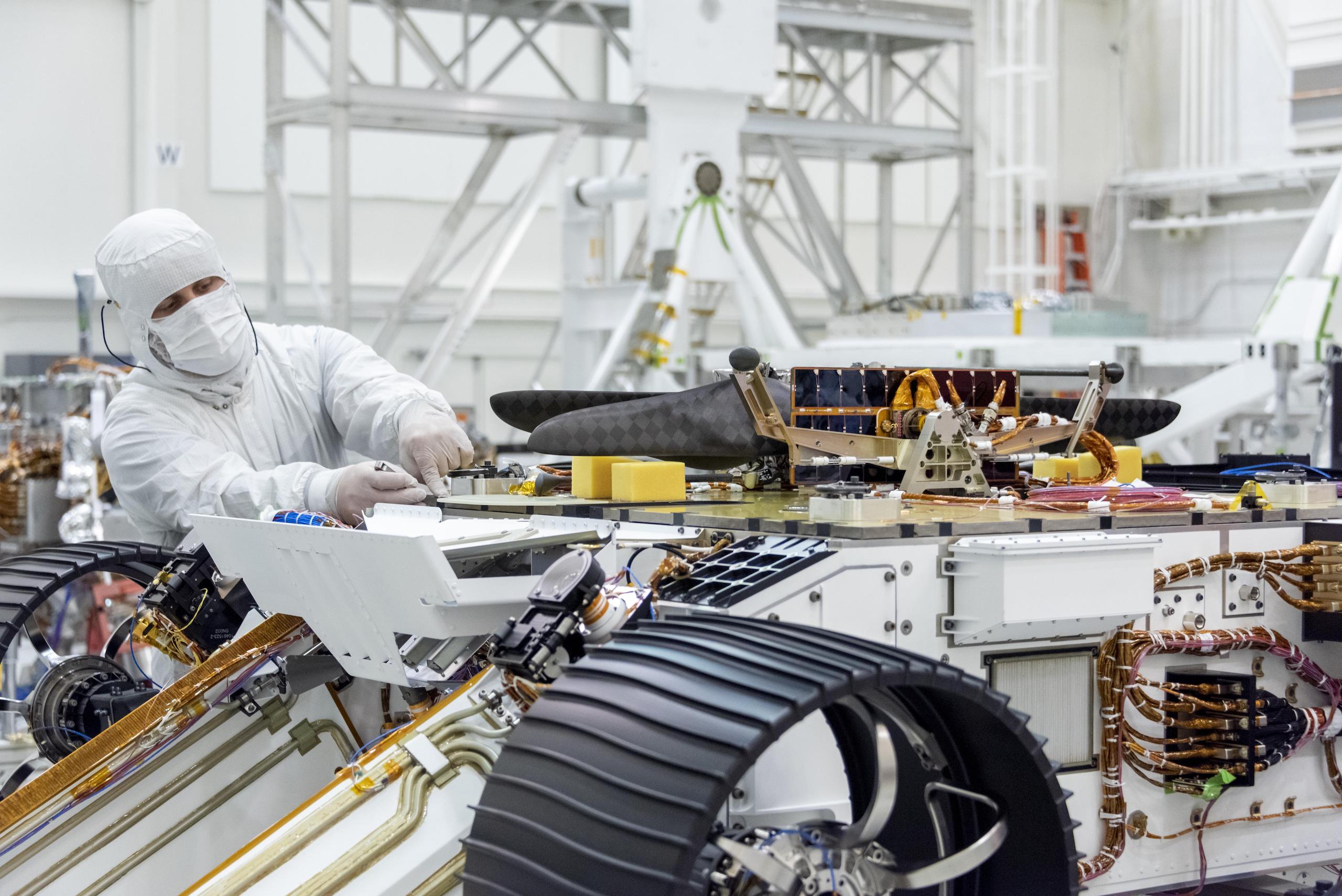
Emirates sending its first space probe to Mars
NASA’s Mars 2020 will not be the only mission heading to the Red Planet next month. The United Arab Emirates (UAE) Space Agency is targeting July 14, 2020, for the launch of its Hope orbiter that will provide a complete picture of the Martian atmosphere and its layers when it reaches the planet in 2021. The orbiter will help answer key questions about the global Martian atmosphere and the loss of hydrogen and oxygen gases into space over the span of a Martian year.
The Mohammed bin Rashid Space Centre built the probe in cooperation with the University of Colorado Boulder, Arizona State University and the University of California at Berkeley. Hope will be launched into space by an H-IIA rocket from the Yoshinobu Launch Complex in Japan.
ExoMars launch postponed until next window
However, another mission that was expected to launch to Mars this year has been delayed until 2022. In light of ongoing problems with the complex parachute landing system and travel restrictions caused by the spreading coronavirus pandemic the joint European/Russian ExoMars rover/lander mission to be postponed two years.
ExoMars is a joint cooperation between the European Space Agency (ESA) and Roscomos, the Russian space agency. It comprises the European-led rover named ‘Rosalind Franklin’ after a distinguished British scientist involved in determining the structure of DNA and the Russian-led surface science landing platform named ‘Kazachok’ after a folk dance.
The ‘Kazachok’ landing platform will transport the solar-powered ‘Rosalind Franklin’ rover to the Red Planet’s surface and both will be outfitted with science instruments to study the fourth planet from the sun and search for signs of life, past or present.
Due to celestial mechanics launch opportunities from Earth to Mars only arise every 26 months and last for a few weeks. The next launch opportunity opens in August 2022 runs through October 2022.
The joint endeavor will launch on a Russian Proton rocket from the Baikonur Cosmodrome in Kazakhstan
“We want to make ourselves 100% sure of a successful mission. We cannot allow ourselves any margin of error. More verification activities will ensure a safe trip and the best scientific results on Mars,” said ESA Director General Jan Wörner.
ExoMars will be the first mission to search for signs of life at depths up to two meters below the Martian surface, where biological signatures of life may be uniquely well preserved. The primary goal of the mission is to determine if there has ever been life on Mars and to better understand the history of water on the planet.
Chase Clark contributed to this article.



